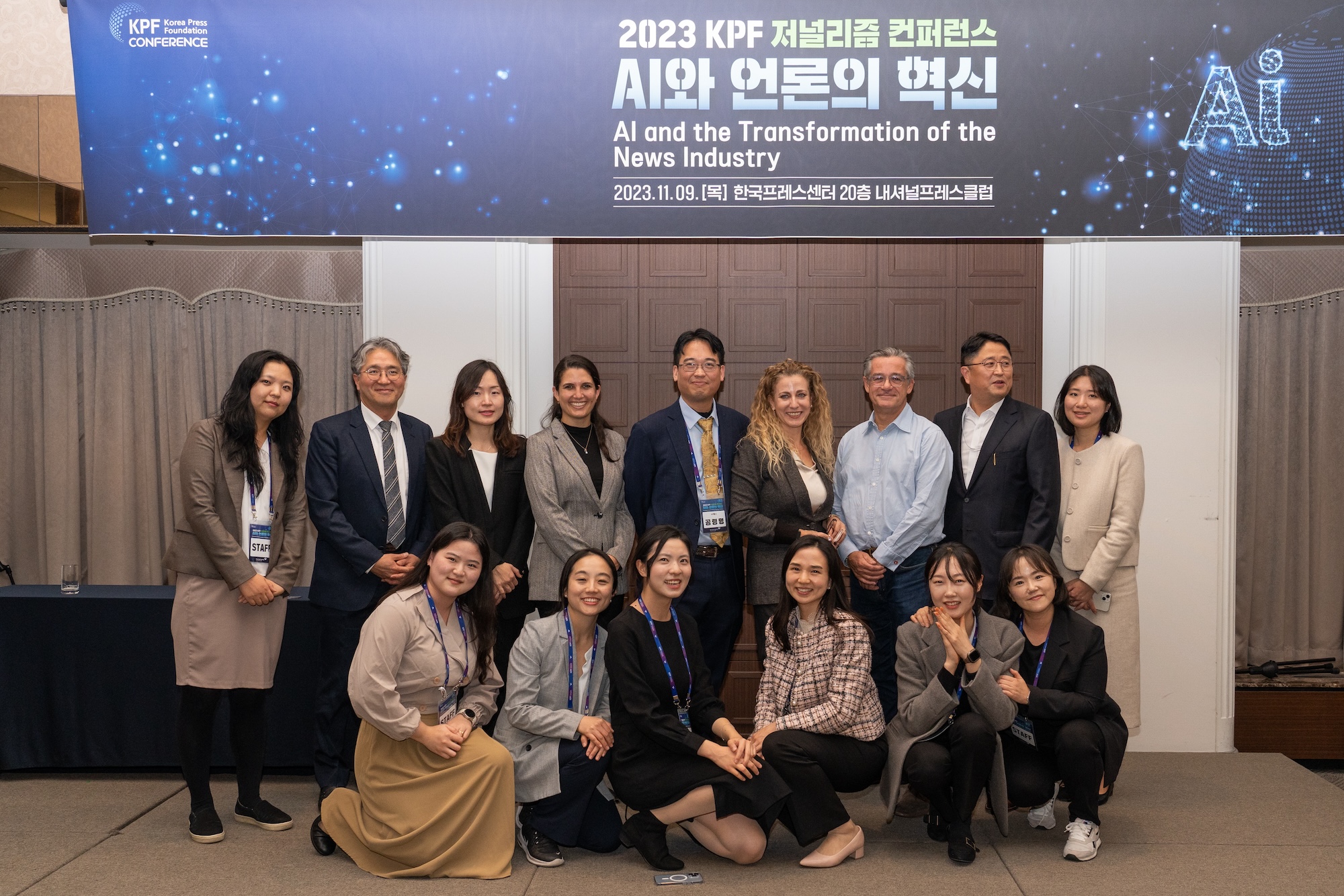The Journalism Conference 2023 organized by the Korea Press Foundation, with a focus on “AI and the Change of the News Industry,” attracted over 200 publishers, editors, and media professionals on November 9.
Among the distinguished speakers were Elena Perotti, the Executive Director of Public Affairs and Media Policy at WAN-IFRA; Charlie Beckett, a Professor in the Department of Media and Communications at the London School of Economics and Political Science; Ernest Kung, the AI Product Manager at the Associated Press; and Elyse Samuels, the Senior Producer of Physical Forensic at the Washington Post.
Elena Perotti delved into the topic of “AI and News Business Transformation” in front of a select group of internet producers. She provided insights into the current use of artificial intelligence in publications, its potential implications for the future, and the collaborative efforts of governments and international organizations in regulating this domain. Perotti recommended that publishing houses establish internal guidelines for AI usage, provide comprehensive training for their staff, and join forces to safeguard against unauthorized use of AI models on their content.
Ernest Kung, the AI product manager at the Associated Press, introduced the “Local News AI Initiative” project, which aims to integrate AI technology into news production at local media outlets. In his presentation on “How to Use Generative AI in the Newsroom,” Kung highlighted successful implementations in various newspapers worldwide, including WFMZ-Television, Michigan Radio, and El Vocero de Puerto Rico. He stressed the importance of media collaboration to develop effective tools utilizing AI systems.
Professor Charles Beckett underscored the need for ethical oversight when incorporating artificial intelligence in journalism. He raised concerns about AI analytic biases, the opacity in model training, and advocated for upholding journalistic principles such as transparency and accountability in the AI era.
Elyse Samuels shared insights on utilizing publicly available data, videos, and images for in-depth coverage of specific events in her presentation on “Physical Data for Investigative Reporting.” While emphasizing the value of leveraging AI for innovative data analysis, Samuels also cautioned journalists to be vigilant against potential information manipulation as AI technologies advance.
All speakers highlighted the significance of collaboration among media organizations as a fundamental strategy for navigating the rapid evolution of AI technology in the news industry.






